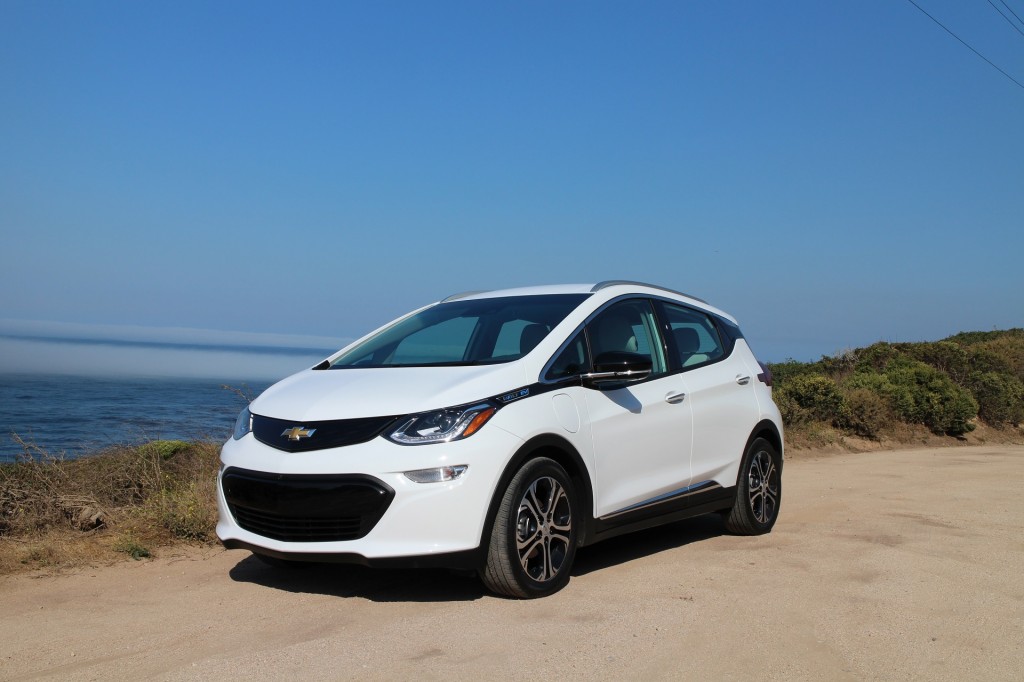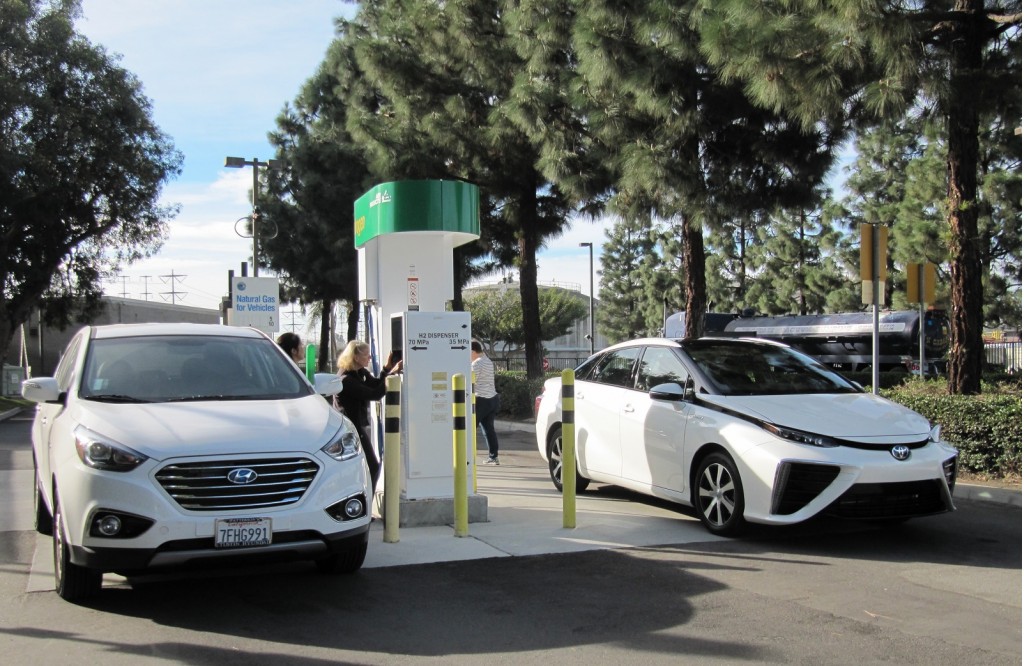Electric cars are virtually as old as the auto industry, but hydrogen fuel-cell vehicles are not.
In fact, exactly fifty years ago this month, GM showed off the first one, which it called the Electrovan.
This remarkable and innovative prototype for a zero-emission vehicle used the body of an adapted GMC Handi-Van, containing the first fuel cell used to power a vehicle.
DON'T MISS: Honda, GM To Build Factory For Fuel-Cell Production By 2025
That powertrain derived from technology first employed by NASA, then less than three years away from putting the first human on the moon.
But the Electrovan shown to the public during a Parade of Progress presentation in October 1966 had a few drawbacks, as all prototypes do.

Illustration of GM's 1966 Electrovan Hydrogen Hybrid
The hydrogen and oxygen used in its fuel cell had to be stored in liquid form at very low temperatures indeed, and the electrolyte solution—potassium hydroxide—was extremely corrosive.
After at least one explosion that reportedly scattered debris up to a quarter of a mile away, testing was restricted to GM properties, and no journalists or members of the public were allowed to drive it.
The purpose of the Electrovan was to identify the challenges inherent in using fuel cells to power road vehicles.
One was performance: 0-to-60-mph acceleration took about 30 seconds. Another was capacity: it could only hold two people. A third was weight: it tipped the scales at 7,100 pounds.
The Electrovan itself remains today in the GM Heritage Center, one of several vehicles over half a century working toward the goal of an affordable, practical zero-emission vehicle.
CHECK OUT: Military hydrogen-powered Chevy Colorado ZH2 launches
That list likely culminates in the 2017 Chevrolet Bolt EV, the first zero-emission vehicle with a 200-mile range sold at a mass-market price.
The landscape has changed in 50 years: lithium-ion batteries didn't exist in 1966, nor did mobile phones.
Today, the energy capacity of a cell rises at roughly 7 percent a year, and billions of people plug in their phones to recharge overnight.

2017 Chevrolet Bolt EV, road test, California coastline, Sep 2016
Electric-power infrastructure exists pretty much wherever people can afford cars, meaning that plug-in vehicles serve as an alternative vision of zero-emission mobility that didn't exist in 1966.
Electric cars then, and for another 30 years after, were limited to versions of the same lead-acid battery technology that had been used for a century.
But after investing more than $2.5 billion in the technology and accumulating more than 3 million miles of on-road testing, GM hasn't abandoned fuel cells.
The company did sharply cut back its research during its 2009 bankruptcy and government-backed restructuring, and it has now partnered with Honda for further development of the technology.
Just last week, GM revealed the Chevrolet Colorado ZH2, a hydrogen fuel-cell powered pickup truck that it jointly developed with the U.S. military.

Chevrolet Colorado ZH2 hydrogen fuel-cell vehicle
The challenges faced by the creators of the Electrovan 50 years ago were those all auto engineers must grapple with in attempting to refine a new technology for volume production and high reliability at affordable prices.
Today, several global automakers now believe they're on a path toward the viability of hydrogen-powered vehicles.
Their components—the fuel-cell stacks, cylindrical hydrogen storage tanks, and the associated electric drive motors, battery packs, and power electronics—now all fit within a conventional vehicle structure holding four or five people.

GM Electrovan fuel-cell prototype, 1966
More importantly, they can see a day when those components will have fallen in cost enough to compete with internal-combustion powertrains.
Recent vehicles from Hyundai, Toyota, and Honda demonstrate that fuel-cell cars can deliver roughly the same performance and range as conventional vehicles.
Assuming a network of hydrogen stations exists to fuel them, that is.
And providing that fueling infrastructure has proven to be equally as challenging as getting the cars designed, engineered, tested, and produced.

2015 Hyundai Tucson Fuel Cell, 2016 Toyota Mirai at hydrogen fueling station, Fountain Valley, CA
Now, the creator of the Electrovan is about to build and sell tens of thousands of battery-electric cars next year—and not a single fuel-cell vehicle.
In that, it differs from rival Toyota, which is all in on the Japanese vision of a "hydrogen economy" fueling not only cars, but industry and residences too.
It promises to be a fascinating competition.
Meanwhile, pause and nod to the Electrovan—with its role in future transport, half a century later, still remarkably unclear.
_______________________________________












